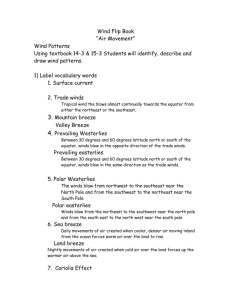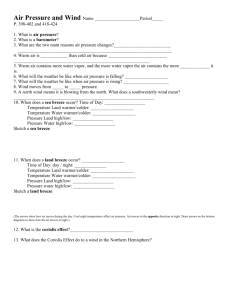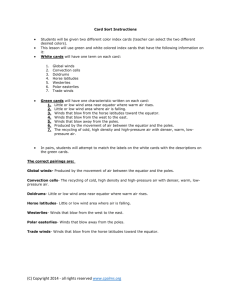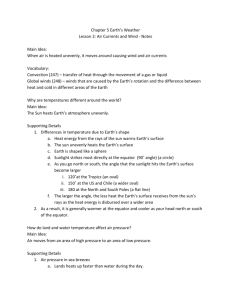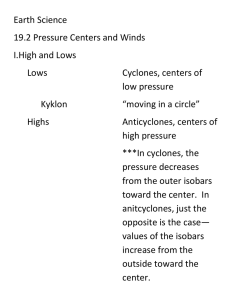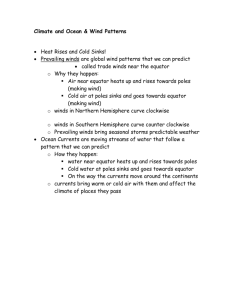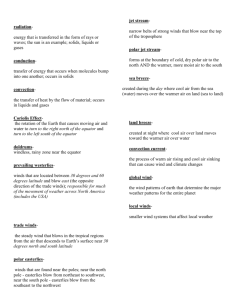Winds: Lesson Notes on Atmosphere, Types & Measurement
advertisement
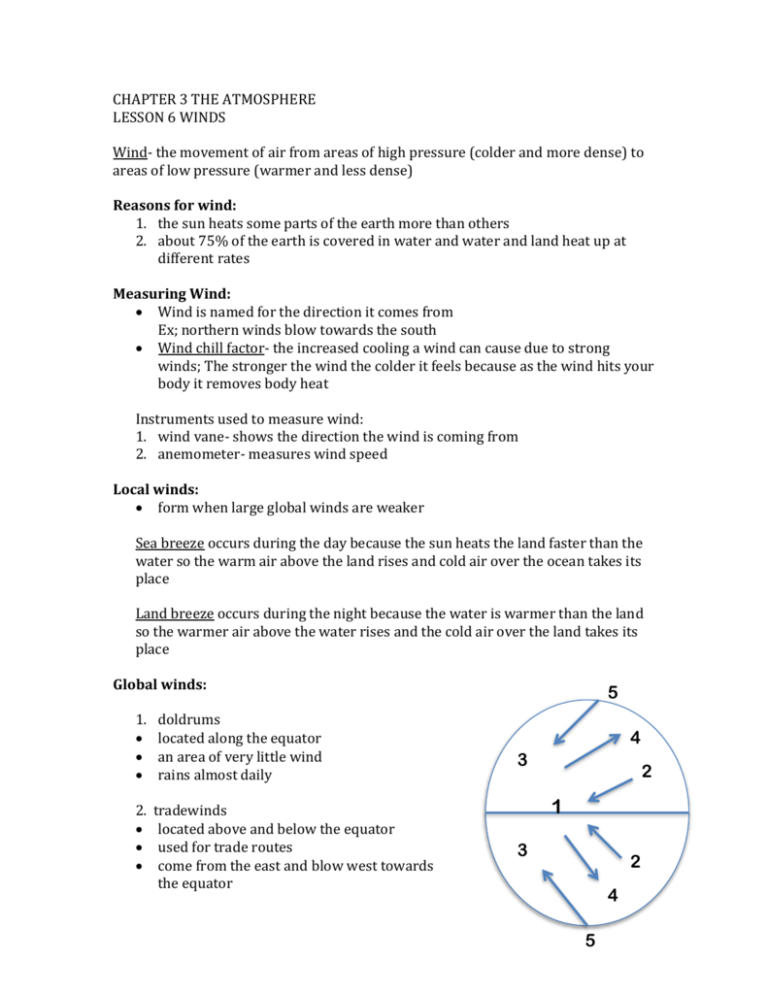
CHAPTER 3 THE ATMOSPHERE LESSON 6 WINDS Wind- the movement of air from areas of high pressure (colder and more dense) to areas of low pressure (warmer and less dense) Reasons for wind: 1. the sun heats some parts of the earth more than others 2. about 75% of the earth is covered in water and water and land heat up at different rates Measuring Wind: Wind is named for the direction it comes from Ex; northern winds blow towards the south Wind chill factor- the increased cooling a wind can cause due to strong winds; The stronger the wind the colder it feels because as the wind hits your body it removes body heat Instruments used to measure wind: 1. wind vane- shows the direction the wind is coming from 2. anemometer- measures wind speed Local winds: form when large global winds are weaker Sea breeze occurs during the day because the sun heats the land faster than the water so the warm air above the land rises and cold air over the ocean takes its place Land breeze occurs during the night because the water is warmer than the land so the warmer air above the water rises and the cold air over the land takes its place Global winds: 1. 2. doldrums located along the equator an area of very little wind rains almost daily tradewinds located above and below the equator used for trade routes come from the east and blow west towards the equator 5 4 3 2 1 3 2 4 5 3. Horse latitudes calm areas of sinking air found at 30° latitude 4. Prevailing Westerlies Move over the United States and influence our weather They come from the west and blow east towards the poles 5. Polar Easterlies They come from the east and blow west away from the poles Coriolis effect- the rotation of the Earth which causes moving air and water to shift right (counterclockwise) above the equator and left (clockwise) below the equator


